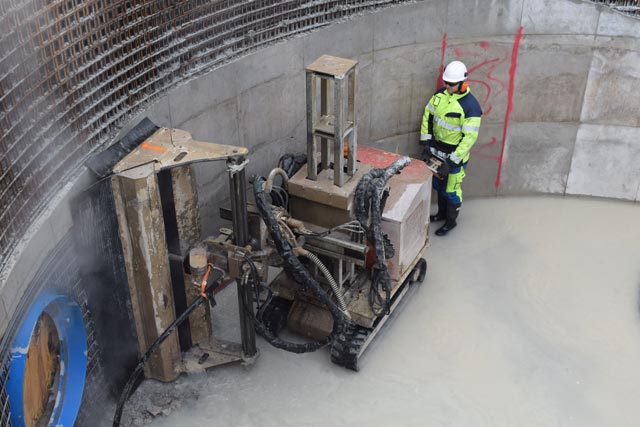
The first competency qualification for water jetting has been launched in a move the Water Jetting Association describes as a game changer.
The new Level 2 Water Jetting Technician Certificate is accredited by the Awarding Body for the Built Environment (ABBE), which is regulated by Ofqual.
The Water Jetting Association (WJA), the member organisation for the UK water jetting industry, has created it to support the upskilling of operatives, improving productivity and safety.
John Jones, WJA Vice-President and Training and Safety Committee Chairman, said: “Our new level 2 qualification sets the bar for water jetting training at a new, higher level, and has already been welcomed by contractors and service users. We believe it’s a game changer.”
Water jetting is increasingly used in construction, building refurbishment and maintenance for a range of tasks, including surface cleaning, drain and sewer jetting, material cutting and hydrodemolition.
It can be used without chemicals and creates minimal waste, making it more sustainable than other methodologies. It significantly reduces hand and arm vibration risks linked with mechanical devices.
Its key risk is injury caused by fluid injection or the kinetic effect of water under pressure. For example, ultra high water jetting is delivered at pressures up to 3,000 bar (43,500psi).
The new Level 2 Water Jetting Technician Certificate, which qualifies holders for a CSCS card, is designed to eliminate, reduce and control the risks associated with this level of performance, said John Jones.
“For the first time, it creates a Level 2 qualification that combines tested theoretical and practical learning with guided learning,” he added. “Holders of this qualification are more likely to be safer and more effective water jetting operatives.
“It clearly establishes water jetting as a skilled occupation. We want to elevate the perception of water jetting within the many commercial and industrial sectors that our members operate in.”
The qualification has two parts. First, candidates undertake directed study by attending and passing the WJA City & Guilds accredited Safety Awareness course.
This is a one-day class-based course that covers key aspects of safe water jetting operation, including types of equipment, site set up, risk assessment, and emergency procedures.
Delegates must then pass two practical WJA training modules, both also City & Guilds accredited. The Surface Preparation module is mandatory, as this teaches the use of both semi-automatic and manual water jetting techniques.
Delegates must then select at least one of three other modules: Drain and Sewer Cleaning, Tube and Pipe Cleaning, or Hydrodemolition.
By this time, delegates will have had 52 hours of structured learning. They then move on to a period of guided learning, using a WJA handbook to take them through four mandatory units and two optional ones.
Those who pass get a qualification for life. They receive a WJA competent water jetting card and, like other operatives will have to undertake refresher training every three years, by attending a WJA Competent Safety Awareness course.
John Jones said: “Many service users already require water jetting operatives to hold WJA jetting training cards. I expect some to build this new competency qualification into their contract specifications as well.
“For the first time, they have an opportunity to select individuals and teams who have been through a rigorous process to prove their ability to carry out water jetting safely, productively and consistently. There is no reason they won’t want to take it.”

